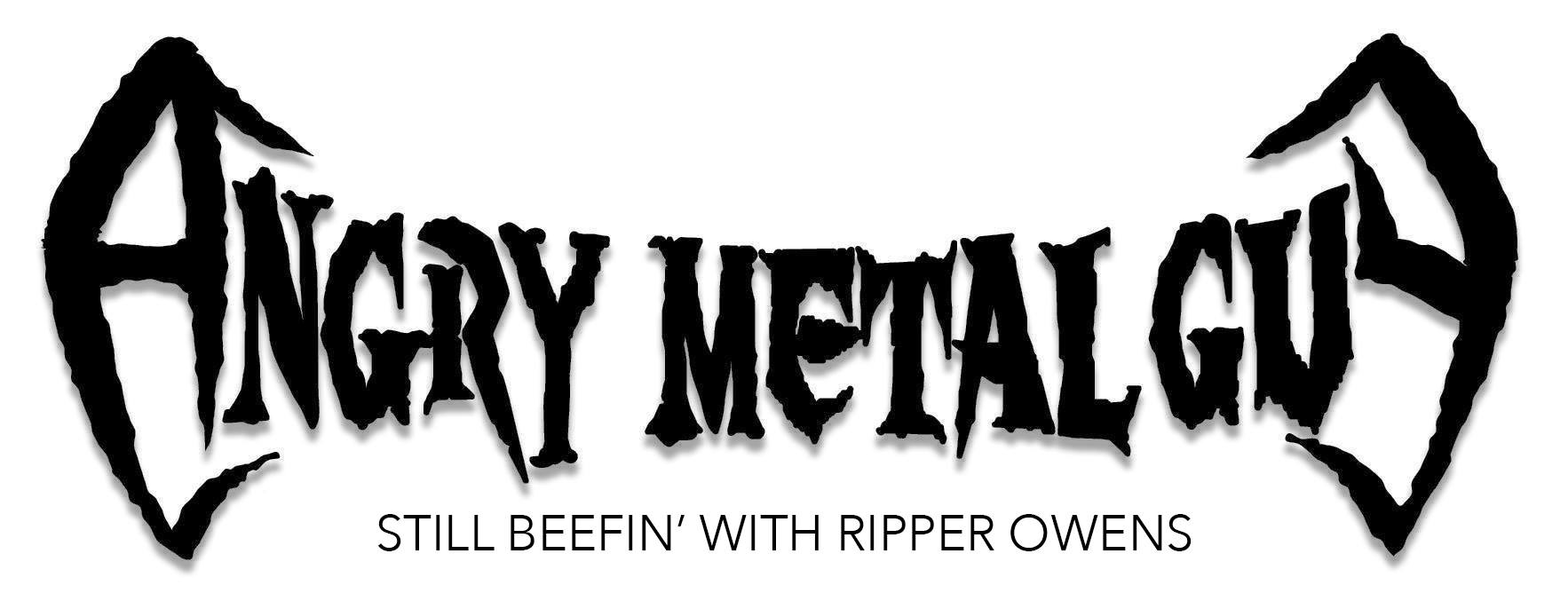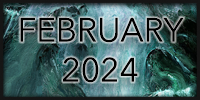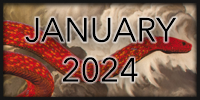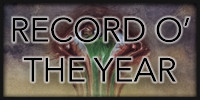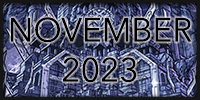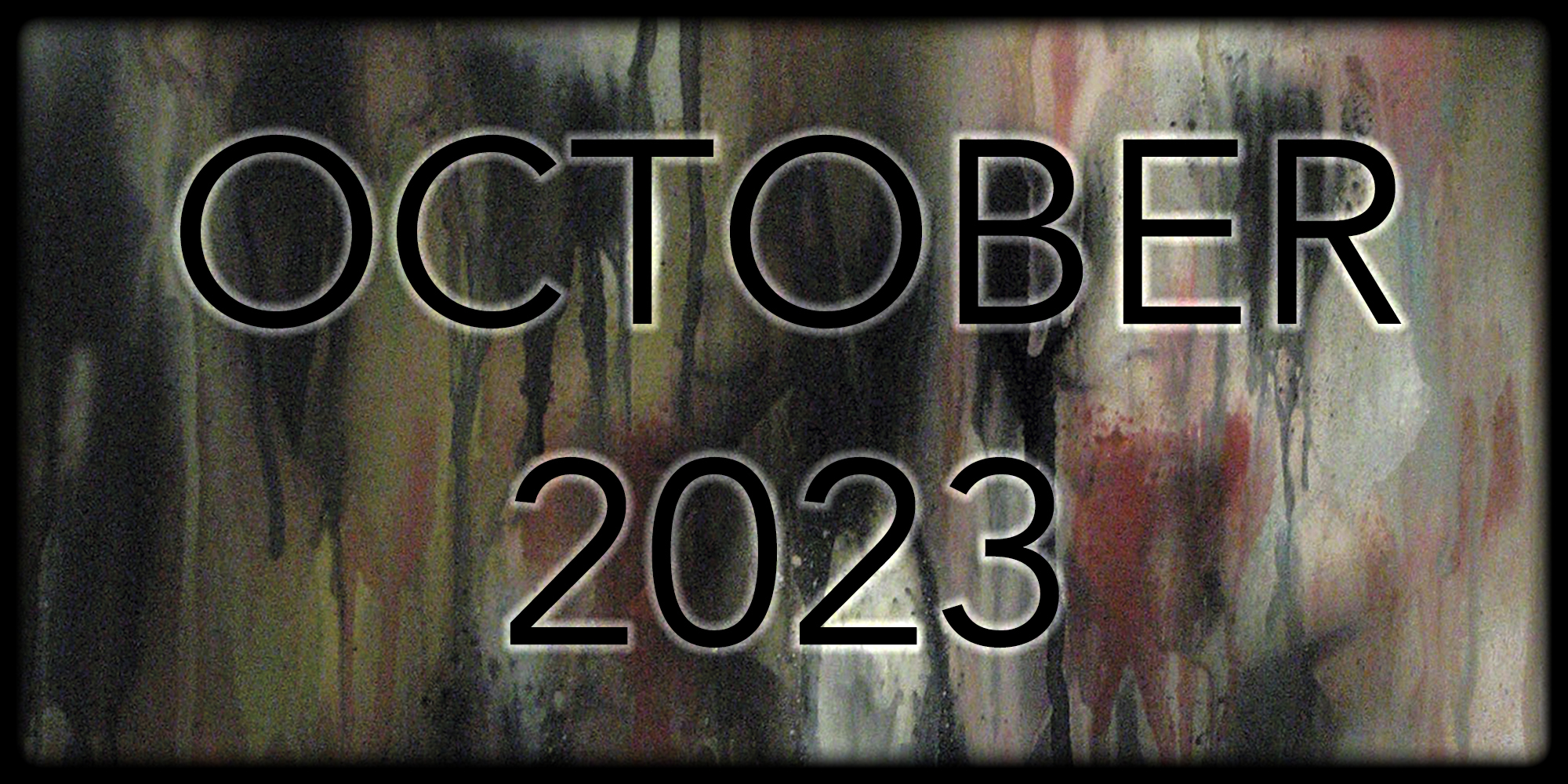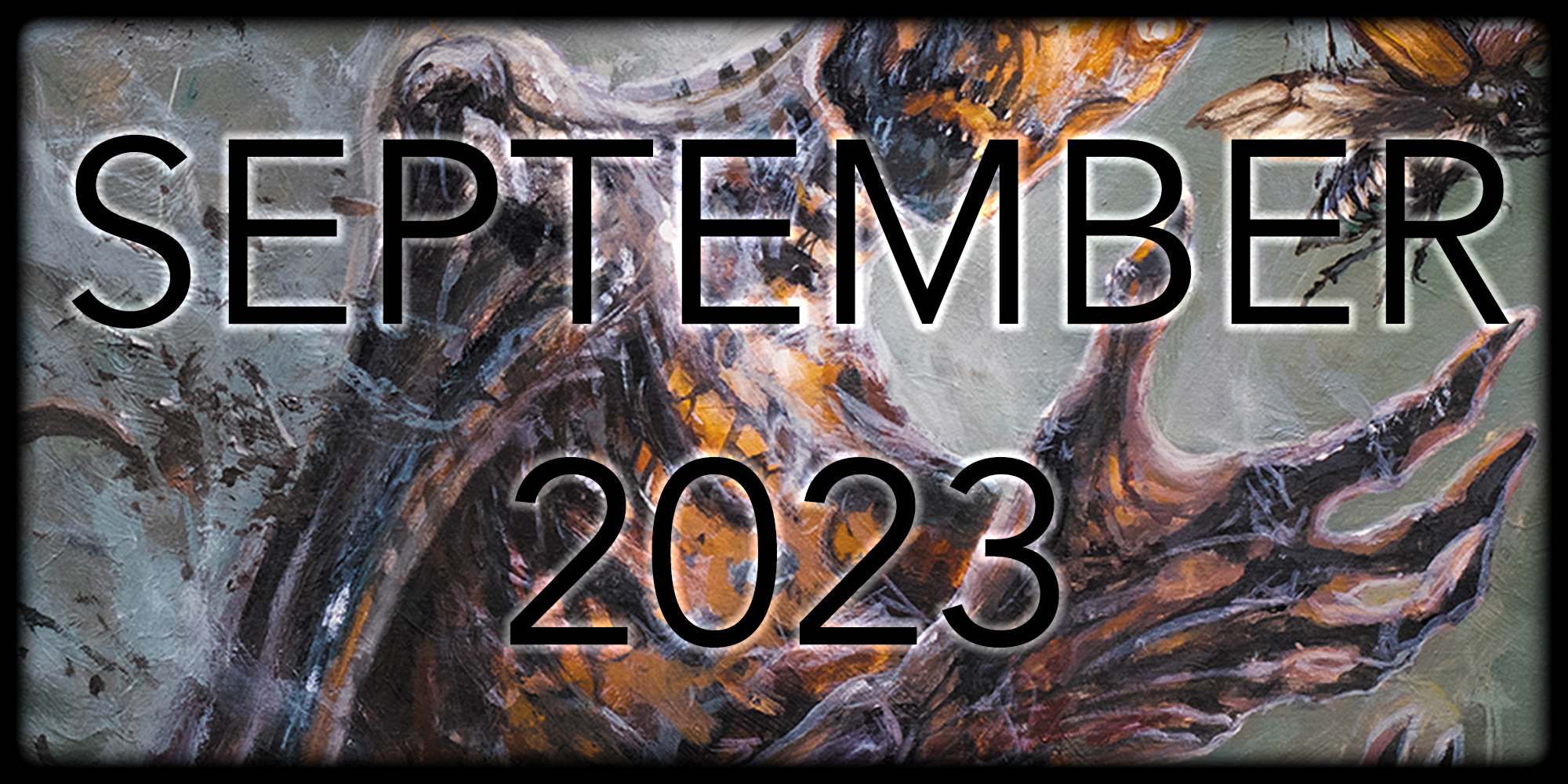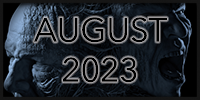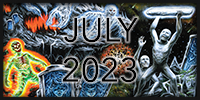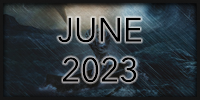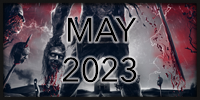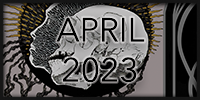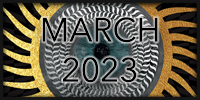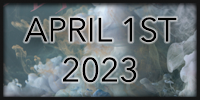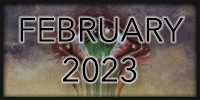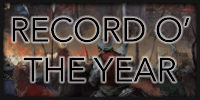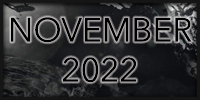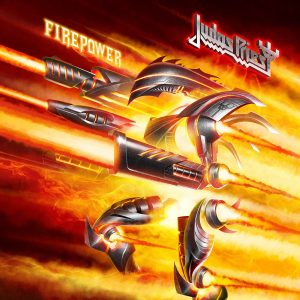 On March 9th, Judas Priest will release their 18th album, Firepower. This makes it the ideal time to take a long wistful look back over their historic catalog and rank their albums from worst to first according to the esteemed tastes of me, Lord Protector Steel. Along with Black Sabbath, Priest was my gateway band into metaldom and they were my favorite act for a goodly portion of my teen years. Coming aboard with their Screaming for Vengeance album, as their golden era was nearly an end. I followed them through the dizzying highs and crushing lows that made up their late career years, and I’m still lurking around the periphery though I’m nearing 50 years of age (that’s 500 in Viking gorilla years). History with a band is one thing, a band’s history is quite another, so let us dig through the dusty decades of metal together, shall we?
On March 9th, Judas Priest will release their 18th album, Firepower. This makes it the ideal time to take a long wistful look back over their historic catalog and rank their albums from worst to first according to the esteemed tastes of me, Lord Protector Steel. Along with Black Sabbath, Priest was my gateway band into metaldom and they were my favorite act for a goodly portion of my teen years. Coming aboard with their Screaming for Vengeance album, as their golden era was nearly an end. I followed them through the dizzying highs and crushing lows that made up their late career years, and I’m still lurking around the periphery though I’m nearing 50 years of age (that’s 500 in Viking gorilla years). History with a band is one thing, a band’s history is quite another, so let us dig through the dusty decades of metal together, shall we?
We finally made it! This is the cream of the crop of the Priest discography. We tracked the worst, through the decent and on to the quite good, and now we’ve arrived at the 5 albums every self-respecting metal fan should own and worship profoundly. But before we genuflect, let’s discuss just why these platters ov steel are so worthy of your precious time.
#5. British Steel (1980) – When Judas Priest moved away from their proggy style with Hell Bent for Leather, they made a successful splash, but kinks still needed to be worked out of their newly stripped-down approach. Following a tour with AC/DC, the band was greatly influenced by the Aussie’s style of straight-forward rock, and when it came time to enter the studio, Priest focused on even simpler, accessible songs with big hooks and replay factor. This gave certain tracks a radio rock polish, but that isn’t to say British Steel is like the pandering commercialism of Turbo. Heavens no! Along with the lighter “hits” British Steel also packed some of the band’s most aggressive cuts, creating a striking dichotomy between the commercial and the carnivorous.
“Breaking the Law” is a tremendously effective opener1, drawing even the casual listener in with the simple song structure, rocking riffs and a huge, rabble-rousing chorus. And what’s more metal than breaking the law? That’s smartly followed by all time great cut “Rapid Fire,” which demonstrated the metal chops were still there and razor-sharp. This is one of their ultimate live set killers, awash in testosterone and swagger. The one-two punch of “Metal Gods” and the immortal “Grinder” is difficult to top, both being first-class metal anthems in their own right. Hell, even the awkward “United” works due to its cheesy-as-hell but undeniably catchy chorus. It also seems like they used this track as the template for much of the Point of Entry material to follow.

Side two kicks off with the classic “Living After Midnight,”2 which went on to be another hit and one of their signature songs. It became a standard on rock radio and it still is to this very day. Oddly enough, it’s the underrated final two tracks that always held a special appeal for me. “The Rage” is slow simmering, moody beast that boils over into a big, mega-dramatic chorus perfect to sing along drunkenly with. Crucially, it shows a slightly darker side of the band on an album that sometimes feels less dangerous than others. Rob gives a bigger-than-life performance and the simple, relentless riffs really put the song over. Molten closer “Steeler” is one of the band’s most aggressive, intense songs and has a go-for-the-throat style that pops with kinetic energy. Rob’s snarling delivery packs added venom and grit and there’s an eerie, threatening tone around the song’s midpoint that always grabbed me. The extended riff pattern that hits at 2:54 is one of my favorite metal moments of all time and it’s always playing just on the edge of my subconscious.
British Steel was a milestone for heavy music in the 80s and set the stage of what would become the golden age of metal. It was extremely difficult to decide whether this or Screaming for Vengeance deserved the #5 spot. I went back and forth several times, but British Steel simply has more “classic” cuts, and so here it sits in the top 5, as it should.
#4. Painkiller (1990) – Painkiller is many things to many people. It’s likely the greatest comeback album in metal history, it’s one of the heaviest moments in the Priest discography, and it’s definitely one of the best examples of an established act re-capturing their youthful lightning in a bottle late in their career. Coming off the commercialized Turbo and the underwhelming Ram It Down, I had pretty much written off my beloved band as a serious metal institution. When the video for “Painkiller” debuted on MTV ahead of the album’s release, my jaw hit the floor hard. What the hell had gotten in Priest’s luck and whiskey to turn them into the re-energized metal fiends I was hearing? The title track is an instant classic and too heavy to have appeared on their flagship albums like Defenders and Screaming. When I got my hands on the album, it was like a revelation. Every song was so tight, powerful and memorable, it was like the band was born again for a new age.
Leading up to the recording and release, the band was embroiled in a lengthy legal battle, having been accused of embedding subliminal messages in their songs, causing 2 young fans to attempt suicide3. All this drama apparently reignited the fire in the band’s collective belly, and this shows in how intensely Painkiller burns from start to finish. Nearly every cut can qualify as a classic in their discography, and though it’s almost too over-the-top and even a bit cartoonish at times (“Metal Meltdown”), there’s no denying this is a wicked sizzling biscuit of a metal opus. “Hell Patrol” quickly became the official theme song for my college rugby team and was blasted ad naseum at every practice and game for several seasons, and we were all the better for it. “All Guns Blazing” and “Leather Rebel” are like long-lost Defenders cuts played at a faster speed, and “Nightcrawler” is just a great song with a mega-catchy chorus.
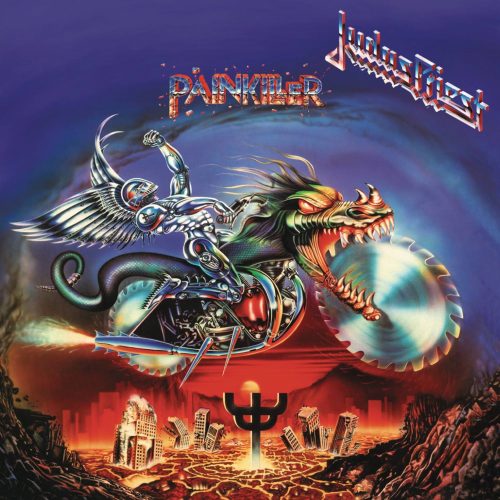
My personal favorites besides the mammoth title track are the epic-sized “Between the Hammer and the Anvil,” where the band creates a tough battle anthem for dangerous men in hard times. It’s the quintessential metal song in so many ways, bigger than life, ready to rumble and guaranteed to gird the loins and puff up the chest of even the biggest nerd. “One Shot of Glory” is even bigger and better. Both one of the band’s best denouements and pure metal songs, even out doing Manowar for a timeless chest thumping war anthem.
Rob lives at the upper limits of his considerable range for much of the album’s runtime, giving everything a manic, crazed intensity which sets the record apart. It also did damage to his voice, which is a real tragedy. Downing and Tipton elevated their game to unheard levels of aggression here, tearing off urgent, heavy riffs and insane solos at the drop of a lead-plated dime. A lot of their best moments as a guitar duo are found here and it sounds like their twenty-something selves came through time to handle the recording. The addition of younger, meaner drummer Scott Travis definitely helped, as it’s almost inconceivable to imagine long-time kit man Dave Holland playing on this thing and keeping up.
Painkiller was special gift for long-time fans of the band, many of whom thought their best days were behind them. It reaffirmed Priest as a legendary institution and gave us all one more great album to add to their deep catalog of classics. Sadly, nothing since has even come close to this level of greatness, and likely never will.
#3. Stained Class (1978) – Of all the Priest albums I rushed out to buy, borrow and steal as my metal education began, Stained Class was the last to really open up to me and make me a believer. Sure, I loved the rabid energy of “Exciter” and the moody melancholy and theatrics of “Beyond the Realms of Death,” but the rest of the album left me cold for some reason. It wasn’t until my college days that I started digging deeper as a result of the band’s high-profile lawsuit which centered on this album4. What I discovered was a very special album indeed – proggy and experimental like Sin After Sin, but where that album felt disjointed and quirky, Stained Class feels inspired and cohesive.
“Exciter” is just as potent an opener as Sin After Sin’s “Sinner,” and the first speed metal song on record. Its ripping riffs and soaring vocals doubtlessly inspired legions of youngsters to form a band and play louder, faster and harder. This is one of Downing’s and Tipton’s finest hours as a guitar tandem, blazing away with fiery, flashy solos. The epic fret-work at 3:38 in particular is a shining moment in metal history. What follows from “Exciter” is a consistently excellent stream of forward-thinking metal gems, from the haunting Spooky Tooth cover “Better By You, Better Than Me,” to the stunning title track, which deserves special attention. It’s one of the best, most intriguing songs the band ever penned. Sticking close to the prog roots the band showed on Rocka Rolla and Sad Wings of Destiny, it injects a lethal dose of pure metal, making for a regal, epic song oozing with class and intelligence. Those riffs, those vocals, everything is just perfectly placed and executed to achieve a larger-than-life feeling. The mid-song leap into Queen-esque theatrics recalls “Bohemian Rhapsody,” and when those big Sabbath-style doom riffs wash over everything and cut to a killer guitar duel, it’s just so perfect. It’s like a series of magical moments sutured together by a brilliant but deranged doctor. If you haven’t spun his track before or in a while, go back and do so now. It’s special.
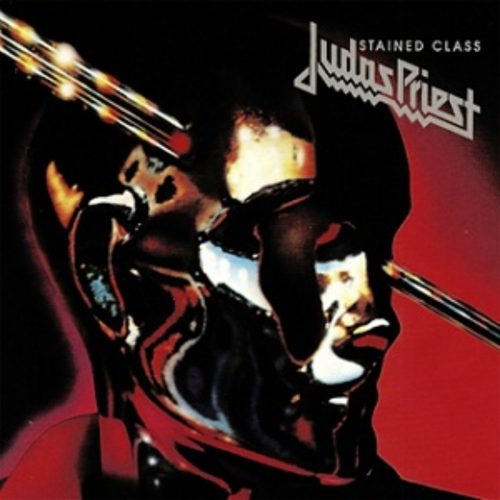
And then there’s “Saints in Hell,” which also plays off the band’s progressive tendencies but in a darker way, alternating between stadium rock and something more ominous for a weirdly disconcerting but rocking tune with one of my all time favorite Priest riffs. I’ve come to suspect this particular song had a big influence on Mercyful Fate in their formative days, as it essentially gives birth to everything their sound would one day become. Things starts to wind down with the ever-haunting “Beyond the Realms of Death,” which is still so damn powerful even all these years later. Rob’s vocals are a thing of genius, both haunting and urgent and the melancholy is palpable. “Hero’s End” is a great closer and another overlooked, underappreciated gem asking the timeless question, “why do you have to die to be a hero?”
With a little maturity and an open mind, Stained Class got deep under my skin and became one of my favorite metal albums. Call it the thinking man’s Priest album, but whatever you label it, this was a special moment in the band’s history and one I wish lasted much longer style-wise. Sadly, it was all wiped away in a shower of leather and studs come Hell Bent for Leather, but such is life in the metal lane.
#2. Defenders of the Faith (1984) – The mighty, the unstoppable Defenders of the Faith! The gleaming chrome, reflecting steel platter ov destruction the band dropped on a world already tenderized and battered by Screaming For Vengeance. This thing hit my teen years like a Tomahawk missile loaded with nuclear hostility, furthering my love of all things metal and prepping me for the thrash wave that was set to break across America. And how could this thing not impress a young metal fan, with its righteous blend of speed, aggression, melody and memorability. Every single song is an ass kicking made to order, and there’s no weak link in the album’s heavy-duty armor.
Opener “Freewheel Burning” tries to pile-drive you into the ground from go with its fury and frenzy, and Rob’s air-raid vocals are a thing of absolute beauty. It’s as if the band was determined to out-metal the predecessor album’s maniacal title track, and they accomplished it with room to spare. There’s no rest for the wicked either, as “Jawbreaker” and “Rock Hard Ride Free” are equally monolithic metal monsters of incalculable mass and density. “Rock Hard Ride Free” in particular became a sort of lifestyle affirmation for me during my reckless youth full of questionable choices and poor decisions. That searing riff it opens with is imprinting on my brain and to this day whenever too many beers are indulged in, a switch flips in the dark recesses of my mind and this anthem blasts, commanding me to once again “go against the grain.”
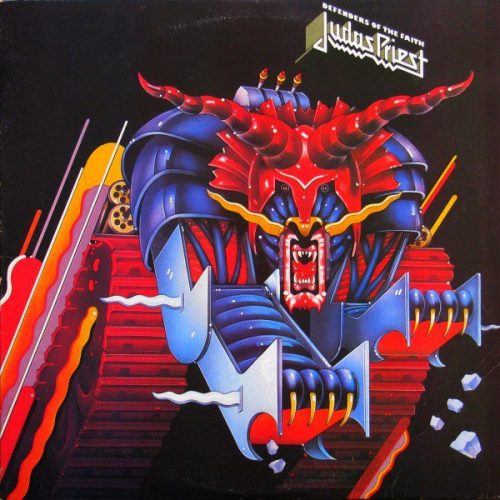
Then there’s “The Sentinel,” which is a nearly an entire metal album unto itself, with enough vintage metal attitude and imagery to power 20 years of Grade E dystopian wasteland warlord movies. It’s such a big song, with so much over-the-top theatrics, and every bit of it works. “Sworn to avenge, condemned to Hell.” What else has metal had to say since 1983 that’s better than this? Nothing! Four songs in and Defenders was already a monumental achievement, and the monster is just getting warmed up!
Now pile undisputed classic cuts like “Love Bites” and “Some Heads Are Gonna Role” on top of that greatness and it’s looking like an embarrassment of riches. I won’t even go into the murky, moody awesomeness of power-ballad supreme “Night Comes Down,” though I sort of just did. Even the back-end stuff here is brilliant, from the martial war march of “Heavy Duty” to the sing-along closing title track, nothing gives a goddamn inch in the fight for trveness. What a war machine of an album this was, is and always will be.
There’s so much glorious win on this album and it sounds like it was made by giants. By gods. Nay, Metal Gods! It seemed a shoe-in for the top spot, and if you asked me to rate it in my teens, it wouldn’t even have been close. This album was my religion and I was a loyal defender of the faith come what may. But here it sits at #2, because Judas Priest had a moment of divine inspiration even this remorseless wargrinder could not overcome. It came really close though, and the contest was bitter, bloody and brutal. No shame in seconds here.
#1. Sad Wings of Destiny (1976) – After all the introspection, rumination and soul-searching, this one almost had to win the top spot. While Defenders of the Faith blew me away as a 14 year old hooligan, it was Sad Wings of Destiny that slowly crept into my soul as I grew older and wiser. This is the shining moment of Priest’s early, progressive-metal style and it sounds every bit as beautiful and inspiring in 2018 as it did in 1976. All the legendary songs the band was convinced to jettison from Rock Rolla finally appeared to show the world what Judas Priest was all about, and the metalverse hasn’t been the same since.
Opening with the titanic, soul-crushing power of “Victim of Changes,” the tone is set for a dark, stark journey into the cosmos. The heavy, doom-esque riffs cascade and twist as a young, all-powerful Rob Halford spins tales of drunken debauchery, obsession, fading beauty and dissipation. The dramatic and theatric go hand in hand with one emotional set piece building toward the next, as the classic, mega-influential Downing/Tipton guitar harmonies make their debut as Rob’s unnaturally high-pitched wails punctuate the madness like a death ray set on liquefy. The sheer insanity of the notes he hits in the finale are legendary, as is this whole goddamn song. One of the Top Ten Greatest Metal Songs of all time right here folks.
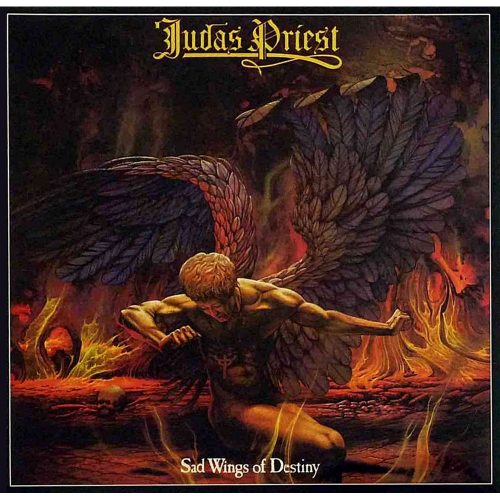
How can a young band follow-up such a mammoth opening statement? With another stone cold classic known as “The Ripper.” It’s a simple, infectious little tale about Jack the Knife with a killer riff line and loads of noodly little flourishes that sound suspiciously like everything Iron Maiden would become famous for years later. Then comes the gobstopping brilliance of “Dreamer Deceiver” – one of the most amazing examples of progressive metal writing ever heard. The shifting moods and builds in this song are unlike any other, and Rob’s otherworldly wailing near the 3 minute mark are beyond unreal. The guitar-work is equally brilliant, keeping pace with the stratospheric vocals, mingling psychedelia with progressive concepts to create a sense of wonder and exploration. A true moment of musical perfection.
But the story doesn’t end there. There’s still the mighty “Deceiver,” pulverizing mountains with its unstoppable momentum and force. Then comes the powerhouse combo of “Tyrant” and “Genocide,” each a classic in its own right. The album concludes with “Island of Domination,” which always felt like the All Father to Sin After Sin’s “Dissident Aggressor.” It has all that song’s might and magic at its disposal, and when the final notes drift into the ether, you’re left exhausted by the stately grace and brilliance of this timeless record.
There’s a reason AMG already ran a piece on this particular album back in 2016. It’s a legendary release that played a big part in defining what metal would become. As Doc Fisting put it, “Sad Wings of Destiny is one of the blueprints for not only Judas Priest, but heavy metal as a whole. If you are into any kind of heavy music, regardless of genre, regardless of your age, you owe it to yourself to listen to this.” I couldn’t say it better myself.
